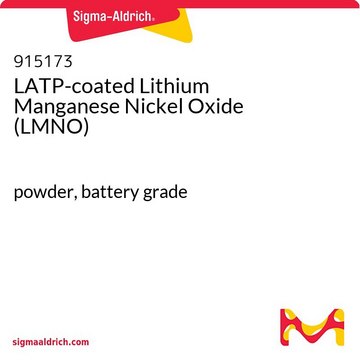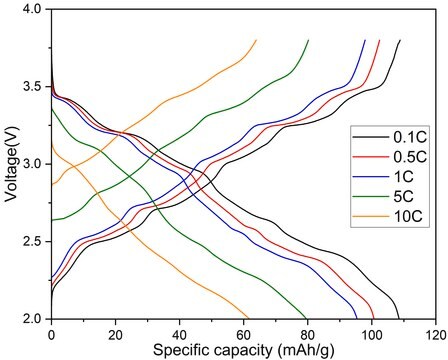915874
Al-doped lithium lanthanum zirconium oxide (LLZO)
solid electrolyte, powder, battery grade
Synonym(s):
Aluminum-doped cubic garnet LLZO, LLZALO
About This Item
Recommended Products
grade
battery grade
Quality Level
Assay
≥99.5%
form
powder
mol wt
Mw 840.62 g/mol
composition
Li6.24La3Zr2Al0.24O11.98
surface area
0.50 m2/g
particle size
5-6 μm (average)
conductivity
0.01-0.1 mS/cm (Ionic conductivity, unsintered, cold-pressed pellet at RT)
density
5.093 g/cm3 (lit.)
application(s)
battery manufacturing
General description
Application
Features and Benefits
- Improved Battery Safety
- Increased Energy Density
related product
Signal Word
Danger
Hazard Statements
Precautionary Statements
Hazard Classifications
Eye Dam. 1 - Skin Corr. 1B - STOT SE 3
Target Organs
Respiratory system
Storage Class Code
8A - Combustible corrosive hazardous materials
WGK
WGK 3
Flash Point(F)
Not applicable
Flash Point(C)
Not applicable
Choose from one of the most recent versions:
Certificates of Analysis (COA)
Don't see the Right Version?
If you require a particular version, you can look up a specific certificate by the Lot or Batch number.
Already Own This Product?
Find documentation for the products that you have recently purchased in the Document Library.
Our team of scientists has experience in all areas of research including Life Science, Material Science, Chemical Synthesis, Chromatography, Analytical and many others.
Contact Technical Service








